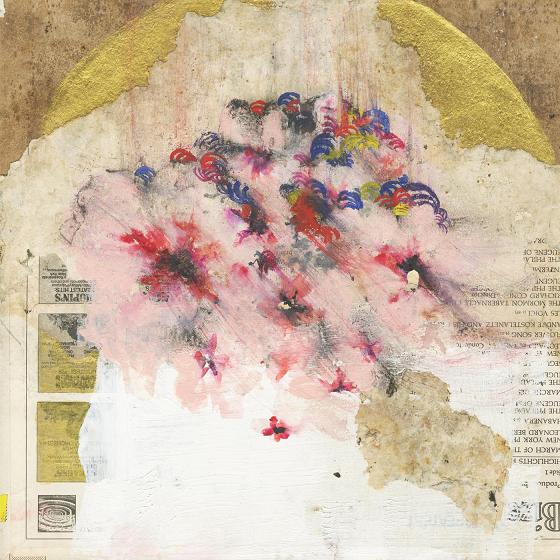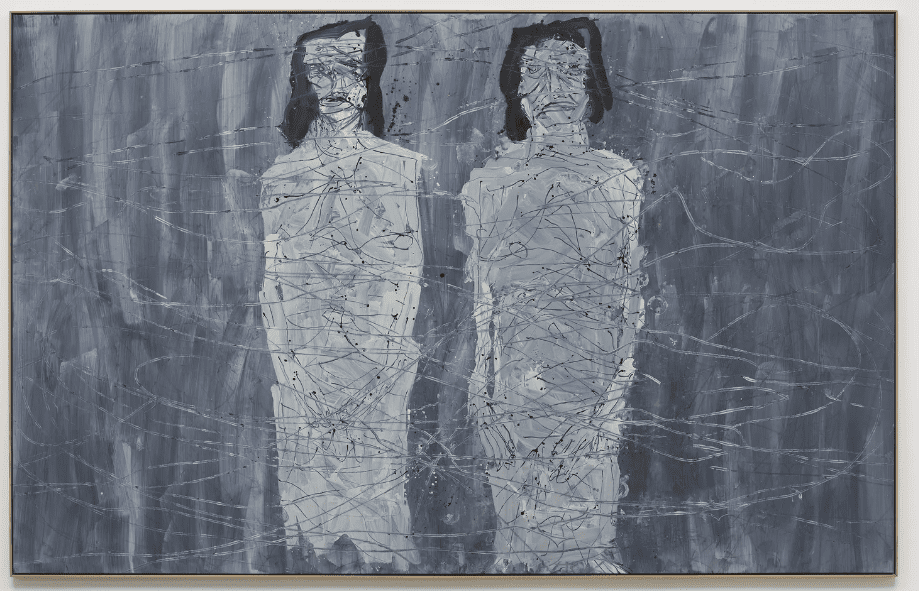[dropcap style=”font-size:100px; color:#992211;”]S[/dropcap]ome years ago electronic music afficionados recognised Teebs and Flying Lotus as the go-to producers of glassy, glitchy L.A. Beats.
Appropriate, then, that Estara is released on Brainfeeder – the Ninjatune sub-label curated by Flying Lotus. Also that (as with FlyLo’s critically-lauded Until the Quiet Comes) the prominence of said beats has been muted somewhat to allow for a more textural, thematic approach to songwriting.
Which is not to suggest that percussion has been diminished in importance – the beats are pristine and compelling – but that tonal instrumental passages take the foreground of the soundscape in looping, sometimes melodic, sometimes even vocal directions.
That structure of slightly varied melodic repetitions anchored by high-hat and brushed snare (or their pitch-equivalents from the TR-909 emulator soundbank) is simultaneously evocative of: raw LA Beats mixtapes; the first listen to The Orb‘s Pomme Fritz; and modal jazz. Given that label boss FlyLo is a great-nephew of John Coltrane, the jazz pedigree that informs both Until the Quiet Comes and Estara is no figment of the imagination.
[quote]Mandowa stamps his musical
signature onto the record,
weaving a living, breathing
album of songs with none of
the icy clinical detachment
that might be expected[/quote]
But whilst the album has notable moments of voice and acoustic instrumentation peppering the electronica, it is in the foregrounding of effects processing that Mtendere Mandowa (Teebs) excels. In a similar vein to hip-hop’s use of vocoder technology as a defining feature (rather than as a hidden remedial tool to disguise the shortcomings of vocalists), here the programme of choice is Ableton Live, applied to keyboard chords with the pulsing compression typical of the effect.
Ableton, when applied to beats and percussion, tends to emphasise the air-moving whomp of the bass kicks, hence its popularity with house producers delivering emphatic dancefloor-stompers. On Estara though, Teebs takes the effect and applies it less as a tool for beefing up the beats and instead as a rhythmic device applied to the mid and upper-mid region of the soundscape. It’s not glitch exactly, because the time signature isn’t interrupted by the pulses of compression, but it has some aspects of the sub-genre.
The effect is twofold in that, by putting the rhythmic drive of songs onto the Ableton screen, the traditional percussion elements can be sequenced with much more freedom. Or, to switch genres for the sake of clarity, it is as if the pianist is told to keep the beat running, whilst the drummer gets busy with the fills.
The secondary effect is that it lends a surprisingly organic feel to what are mostly synthetic keyboard voices – the pulsing  Ableton compression adding that ‘breathy’ impression that the programme is known for.
Ableton compression adding that ‘breathy’ impression that the programme is known for.
Additional production effects include a distancing (either some sort of controlled quantising, or perhaps just a simple application of the tone slider) technique on the primary melody which, in conjunction with stereo panning, induces a certain degree of disorientation in the listener – as if momentarily submerged in water. Not that such techniques are new – there is much on Estara that borrows from the binaural beats/alpha-wave simulation mixtapes that glut the whale-music-meditation corners of YouTube.
If the electronica techniques already exist though, or derive from production software, it is not to say that Teebs is in the business of mere assembly. Mandowa stamps his musical signature onto the record, weaving a living, breathing album of songs with none of the icy clinical detachment that might be expected of a producer’s album. That’s partly due to the use of featured musicians (Jonti’s voice on ‘Holiday’, Lars Horntveth’s clarinet (or is it tenor saxophone?) on ‘Wavxxes) who drift in and out of the mix, but bring a human touch nonetheless.
It’s also due to well-timed moments where tried-and-tested sonic elements are dropped into the composition to induce a good old-fashioned wait-for-the-drop screwface in any listener with a pulse. The jungle bass of ‘SOTM’ or the Yppah-like belted snare hits of ‘Shoouss Lullaby’ are top examples.
If, as is claimed by Brainfeeder’s press notes, Teebs has backed away from pure beats programming, what has taken its place is a certain warmth of composition, at times exhilarating. ‘Hi Hat (feat. Populous)’ wafts a hint of the Quincy Jones intro hook from MJ’s ‘Human Nature’ and spirits it in and out of the soundfield to stunning effect (throughout the album, this teasing with half-grasped melody is a recurrent theme. There is much of Coleridge’s lament here
Could I revive within me
Her symphony and song,
To such deep delight ‘twould win me
That with music loud and long,
I would build that dome within the air!).
Later, the flamboyantly overdriven Fender Rhodes keys and rimshot percussion of ‘NY Pt.1’ focus the attention; the Art of Noise-evoking secondary piano melody on ‘Piano Days’, and the vinyl hiss (interspersed with the type of botched segues that plague the transitions between songs on mp3 players) on ‘Piano Months’ peppers the record with a little comment on playback technology.
The showpiece is ‘Wavxxes (feat. Lars Horntveth), which gradually deconstructs the beats, chordwash and production effects that distinguish the album, paring them back until all that remains is two musicians interacting in a simple counterpoint between acoustic guitar and the breathiness of Horntveth’s wind instrument (the track title suggests saxophone rather than clarinet, and there is a bark to the tone that is more brass than woodwind).
Eventually the album ends on the sound of the musicians chatting, as the melody breaks down on a wrong note from guitar. The playout loop is near-identical to the album’s opener, allowing a Viconian ricorso for those inclined to let the album replay.
Available from April 7th.
[button link=”http://www.brainfeedersite.com/” newwindow=”yes”] Brainfeeder[/button]

An observer first and foremost, Sean Keenan takes what he sees and forges words from the pictures. Media, critique, exuberant analysis and occasional remorse.




















